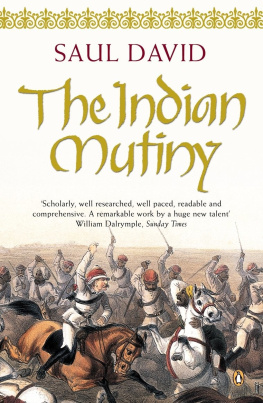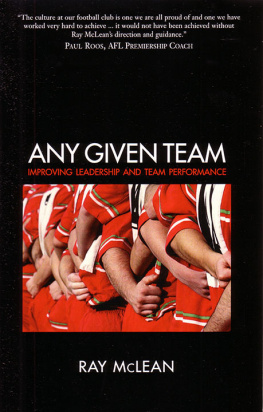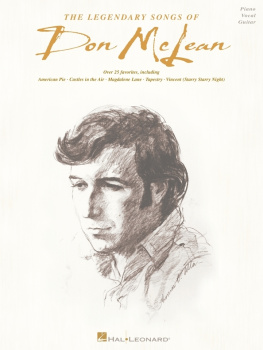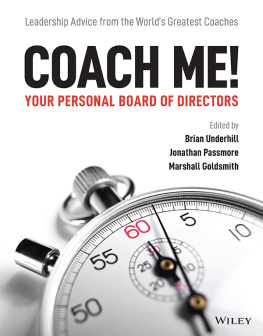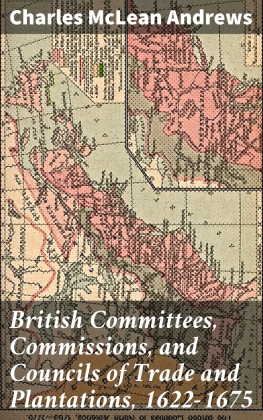A leader is a dealer in hope.
NAPOLEON BONAPARTE
Leadership
IN THE MIDDLE of his career at CN, my father was elected union leader with the Order of Railroad Telegraphers. For the next fifteen years, he would faithfully travel to St. Louis, Missouri, where the order was headquartered and meetings were held. He and his fellow telegraphers would discuss the issues of the day, the most important of which being how to improve labour relations at CN. It was an orderly business with a clear agenda for the most part, but on November 21, 1950, shortly after ten thirty in the morning, two trains collided at Canoe River, British Columbia.
The westbound train was a troop train carrying Canadian soldiers. Most were newly minted privatesyoung gunners with the 2nd Field Regiment of the Royal Canadian Horse Artillerybut some were veterans of World War II. They were all on their way to Fort Lewis, Washington, where they would be transported by military ship to Korea. Half of the cars of the westbound train were wooden with steel frames.
The eastbound train was a passenger train less than a day into its transcontinental journey from Vancouver to Montreal. All of those cars were steel.
They collided on the turn at a blind corner a few kilometres south of the junction at Red Pass. The engineers and firemen of both trains were killed on impact. There was no loss of civilian life on the passenger train, but the wooden front cars of the troop train were devastated. Seventeen soldiers died, and many more were terribly injuredscalded by the steam from the damaged engine boilers.
The accident occurred in a remote high mountain area west of Valemount, British Columbia, and it took several hours before a train arrived from Jasper to take the survivors and casualties back to Edmonton. A second train was dispatched from Kamloops to pull the transcontinental train out of the area. It started to snow and the temperature dropped below freezing.
In the waiting hours, there were acts of bravery and resilience. Communications were down, but someone set up a temporary means of communication and put the emergency call in to Jasper. A doctor from the passenger train administered to the injured with the help of his wife, who was a nurse, and other volunteers. A hospital unit was set up in one of the dining cars and a morgue in the other.
My father was fifty-two years old, and I was twelve. We were living in Edmonton at the time, and I had just started junior high school. Dad must have come home early that day, because I remember him getting into his car and leaving shortly after I got home from school. He was worried that a lynch mob was going to hang the young operator everyone blamed for the tragedy. People were that upset. The operator was a twenty-two-year-old man named John Atherton stationed in a small town near the site of the accident. According to reports, he had omitted the words at Cedarside from a telegram delivered to the troop train at Red Pass Junction. The troop train was supposed to wait at a siding at Cedarside before proceeding west. Instead, the troop train carried on to Canoe River, unaware of the eastbound train.
Dad drove all nightfirst to the Interior where he picked up John Atherton, and then straight through to Vancouver where he thought the young man would be safer. I dont know if Dad thought his operator was guilty or innocent that night, but he wasnt going to abandon a man on his watch. I found out later that he took some of his vacation time to stay in Vancouver for a few extra days to ensure the operator was not harmed. But the story doesnt end there.
John Atherton was charged with manslaughter on January 9, 1951, but a Canadian lawyer named John Diefenbaker defended him at the request of his wife, Edna Diefenbaker, who was suffering from leukemia. John Diefenbaker was also the Member of Parliament for his home riding of Saskatchewan, and among his constituents was John Athertons father, Alfred Atherton, a CN station master.
Alfred asked Diefenbaker to act as his sons defence lawyer, but Diefenbaker declined; he was too busy with his parliamentary obligations, he was not a member of the bar in British Columbia, and his wife was dying in a Saskatoon hospital. Determined, Alfred went directly to Edna, somehow gaining access to her hospital room. She listened to Alfreds story and promptly accepted the case on her husbands behalf. Diefenbaker would have to take and pass the B.C. bar exam first, however, which was said to be difficult and came with a steep $1,500 registration fee. Deferring to her judgement, Diefenbaker took the case. Edna died a few weeks later, on February 7, 1951. It was a month before the preliminary hearing.
In preparation for the hearing and the trial that followed, Diefenbaker researched and, in fact, studied telegraphy in an attempt to understand how words could be eliminated, interrupted, or overlooked in a message transmitted by wire. Among his findings was an account of transmissions being interrupted by a bird dropping a fish on a snow- covered wire.
It was, he wrote later in his memoir, not well documented, but it was all we had.
He was also determined to focus on other factors contributing to the tragedy, which included a need for block signalling, a sharp curve along that particular section of the line, a sequence of communications issues, and most importantly, the need to eliminate wooden passenger cars.
The trial lasted four days, and after forty minutes of deliberation, the jury acquitted John Atherton of all charges. Witnesses said his mother broke down and cried when she heard the verdict. John Diefenbaker, who would be elected prime minister of Canada in 1957, later wrote about the case in his book, One Canada. It was a defining moment in a distinguished career.
This brings me back to the subject of leadership. It seems to me that leadership is a term often misunderstood. People think of leaders as people who are popular and widely known. They think of politicians, community leaders, sports figures, academics, and business or professional leaders. These are all types of leaders in their own way, but in my view, the definition of leadership is not always tied to your position in life or even your responsibilities. It is certainly not tied to wealth. A true leader is a person who does the right thing when faced with a tough decision and who knows how to motivate others to follow their lead.
I see many examples of that type of leadership in the Canoe River tragedy: a doctor, a nurse, and a group of civilian volunteers working together under terrible circumstances; a father determined to get his son the best lawyer he could find; a dying woman who cared about the fate of a stranger in her last month of life; a railroad that adopted virtually every recommendation made to them to avert similar disasters; a future Canadian prime minister; and my father, Frank Carl McLean.
Dad was a man of quiet wisdom and compassion, and although I am often asked whether he would be proud of my service to CN as chairman of the board, I know it would not come close to the pride I felt for him that night in 1950.
IT IS 1952, two years after the Canoe River train wreck, and I am running for junior class president. My campaign is going well and I anticipate an easy victory. My opponents are disorganized and distracted by their social lives, which are busier than mine. I use this to my advantage and win. It is my first taste of leadership and I like the experience, so a few years later, I run for senior class president against a friend. I lose. He wins. I am silently critical of his performance as president and believe for many years longer than I care to admit that I would have been the better leader. I am comforted somewhat when I am elected class valedictorian, but as time passes, I dont remember a single word of what I said in my address. I remember, though, that I lost an election and a friend won and that it took me a long time to understand what mattered and what did not.
Next page





